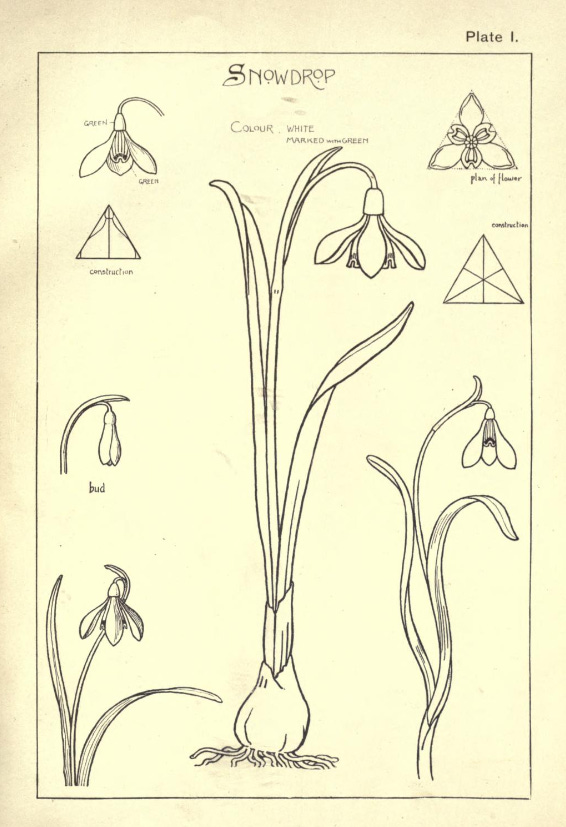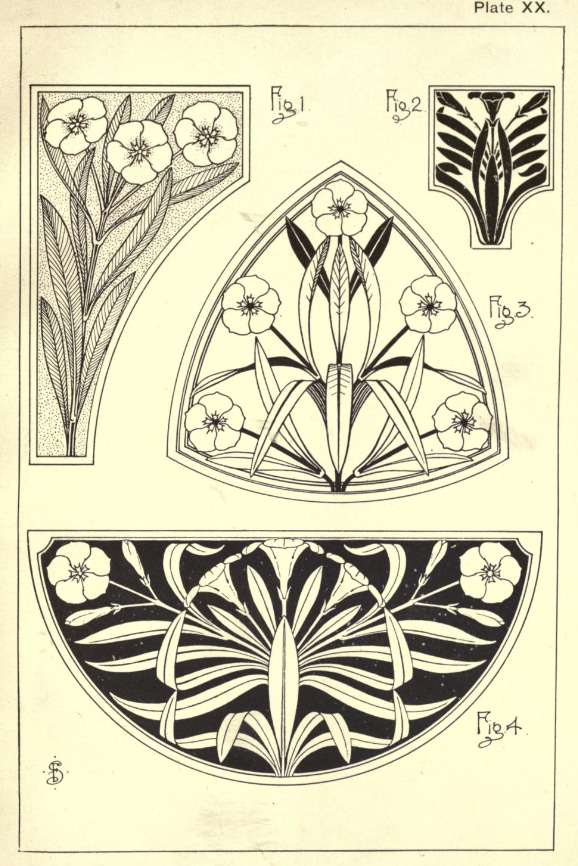I’m always interested in turn of the century how-to ‘design’ books - this particular book shows you how to turn natural flower drawings into designs for repeating patterns, borders and to fill in any shape. If you love the sinuous forms found in early 20th century book covers, illustrations and art nouveau this is a great insight into how it was taught!
Over twenty flowers are reproduced in natural form (but not like scientific illustration, more like a simplified line drawing of buds, stems, leaves etc) and then reinterpreted into an illustrated design. This book was created for art/design students so in the first few pages you can see the exams that directly correlated to the study of this book. Things like:
Freehand drawing in outline: students were asked to draw from photographic representations of foliage, flowers, fruit.
Drawing on the blackboard: students were expected to be able to draw using chalk on a large scale, both from a photograph and from memory of fruit/flowers.
Memory drawing of plant forms: with a pencil, chalk or brush students were required to draw certain plants and leaf forms from memory as given by the examiner. As well as giving a simple analysis of their characteristics they would also have to do a decorative reinterpretation of the plant.
I found this so interested since the memory and art isn’t something that’s taught widely in art nowadays - a lot of emphasis is on ‘copying’ casts and from life. The author stresses that drawing these plates isn’t a substitute for drawing direct from nature.
Onto some of the plates! Below is a simple construction of a snowdrop and then a reinterpretation in a square, diamond and oblong. I think it’s also interesting how the leaves/petals encroach onto the border and isn’t totally restricted inside the shape.
Download the book
Read the entire book for free here.
Read more
Frank Steeley was a teacher at the Birmingham Municipal School of Art and also wrote other books like:
Lettering for schools and colleges, 1902
The New Art Geometry: or, Geometrical Drawing Applied to Design, 1901











